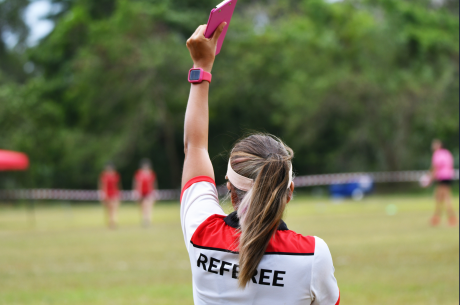The Australian Sports Brain Bank (ASBB) is calling on Victorians who have played sports at any level to pledge their brains to the Victorian arm of the Australian Sports Brain Bank where researchers will investigate the effect of head impacts and concussion.
The ASBB today launched its Victorian operations in conjunction with the Victorian Institute of Forensic Medicine (VIFM). It is part of a Global Brain Bank initiative, to improve understanding of head impacts in sport through autopsy.
Associate Professor Pearce will manage the bank’s Victorian arm and coordinate clinical assessments of future donors.
“We need to develop a clinic for specific research. Our sporting community has a problem and we need to come together for the benefit of the whole community and our children,” Associate Professor Pearce said.
The VIFM will provide brain retrieval facilities for donated brains, all of which will be assessed in the ASBB’s dedicated brain diagnostic laboratory with formal reports sent to donors’ nominated doctors.
Former AFL player Shaun Smith, who suffers from depression and uncharacteristic mood swings, was one of the first athletes to pledge to donate his brain to the ASBB.
“Your brain controls your whole life. Basically, all the repetitive knocks rewire your brain, your life and that is why I have made the pledge, to help find an answer for the next generation” Smith said.
ASBB head, Clinical Associate Professor Michael Buckland from Sydney’s Royal Prince Alfred Hospital, thanked Shaun for his pledge.
“There is no doubting the long-term implications from head injuries, and this new Melbourne brain bank will contribute to international research to better understand the long-term implications of head impacts in sport,” Professor Buckland said.
VIFM Forensic Pathology Head, leading forensic neuropathologist Dr Linda Iles, said: “There are so many questions still to be answered about head impacts in sport and we are pleased to join with the Australian Sports Brain Bank and other global agencies to provide forensic pathology services to assist with the important research for the community.”
Chronic Traumatic Encephalopathy (CTE) is the most high-profile neurodegenerative disease associated with sport head impacts. It has been linked to boxing and American football and in 2014 was diagnosed for the first time in an Australian sportsman, former Manly rugby player, Barry “Tizza” Taylor.
At present CTE can only be diagnosed after an autopsy.
Professor Buckland said Barry Taylor’s diagnosis was a wake-up call.
“CTE has been diagnosed in hundreds of athletes in the US, as well as Canada, the United Kingdom, Ireland, and Brazil, and we need to learn how to prevent and treat the disease.
"There are some people who say it's not an issue in Australian sports, however, there has been no significant research conducted here so the bank is an important first step. Research into CTE will help us understand the long-term implications in athletes at all levels," Professor Buckland said.
- The Australian Sports Brain Bank is an exclusive Australian collaborator with the Concussion Legacy Foundation (CLF) Global Brain Bank. CLF created the world’s first and largest, sports brain bank in the United States in 2008, in collaboration with Boston University researchers
- Members of the Global Brain Bank commit to collaborative research, including using common study method, common data elements, and sharing data to accelerate global understanding, prevention, and treatment of the consequences of head impacts in sport.
- Athletes can sign up to pledge their brain at www.brainbank.org.au.
Media contact | Kathryn Powley | 0456 764 371 | k.powley@latrobe.edu.au


